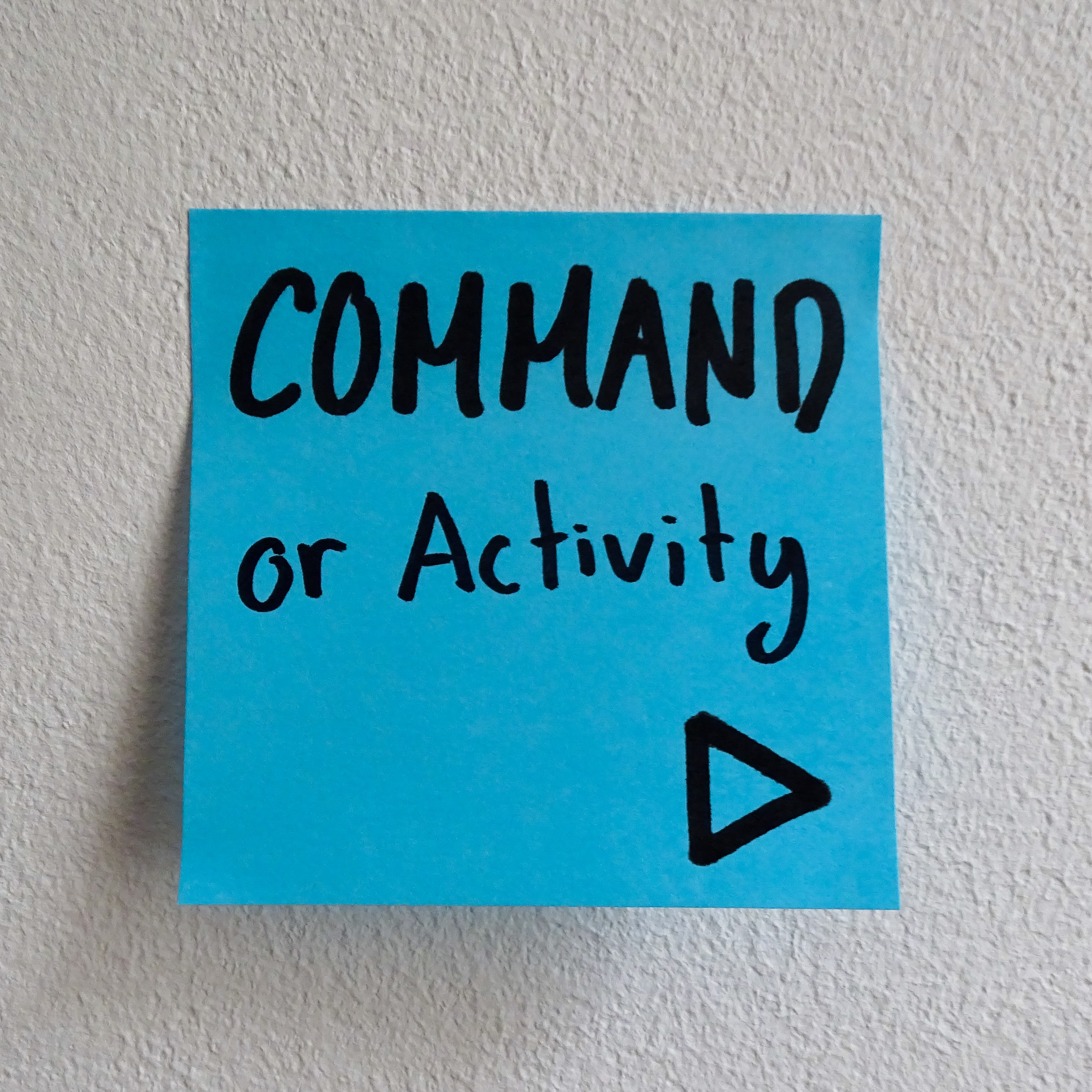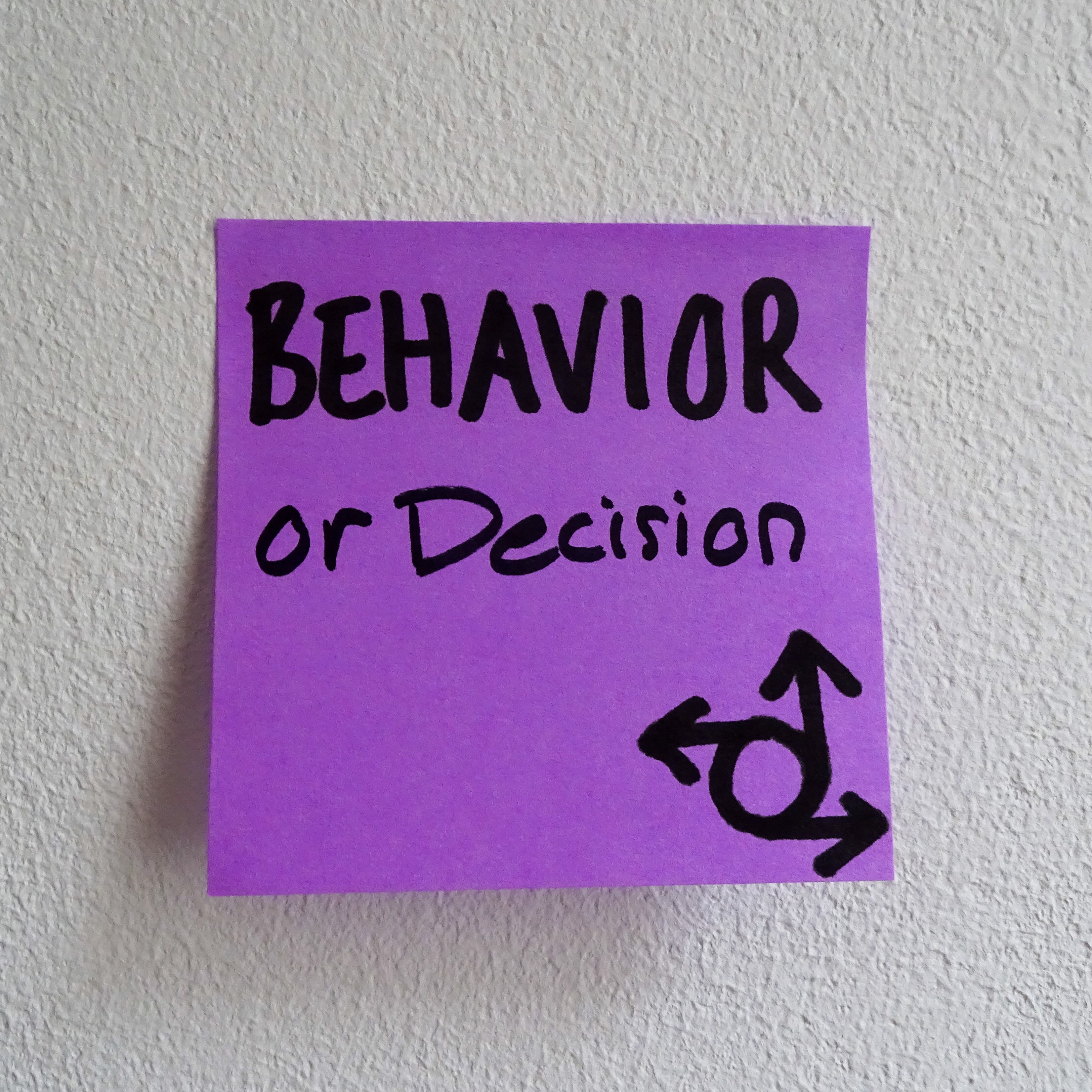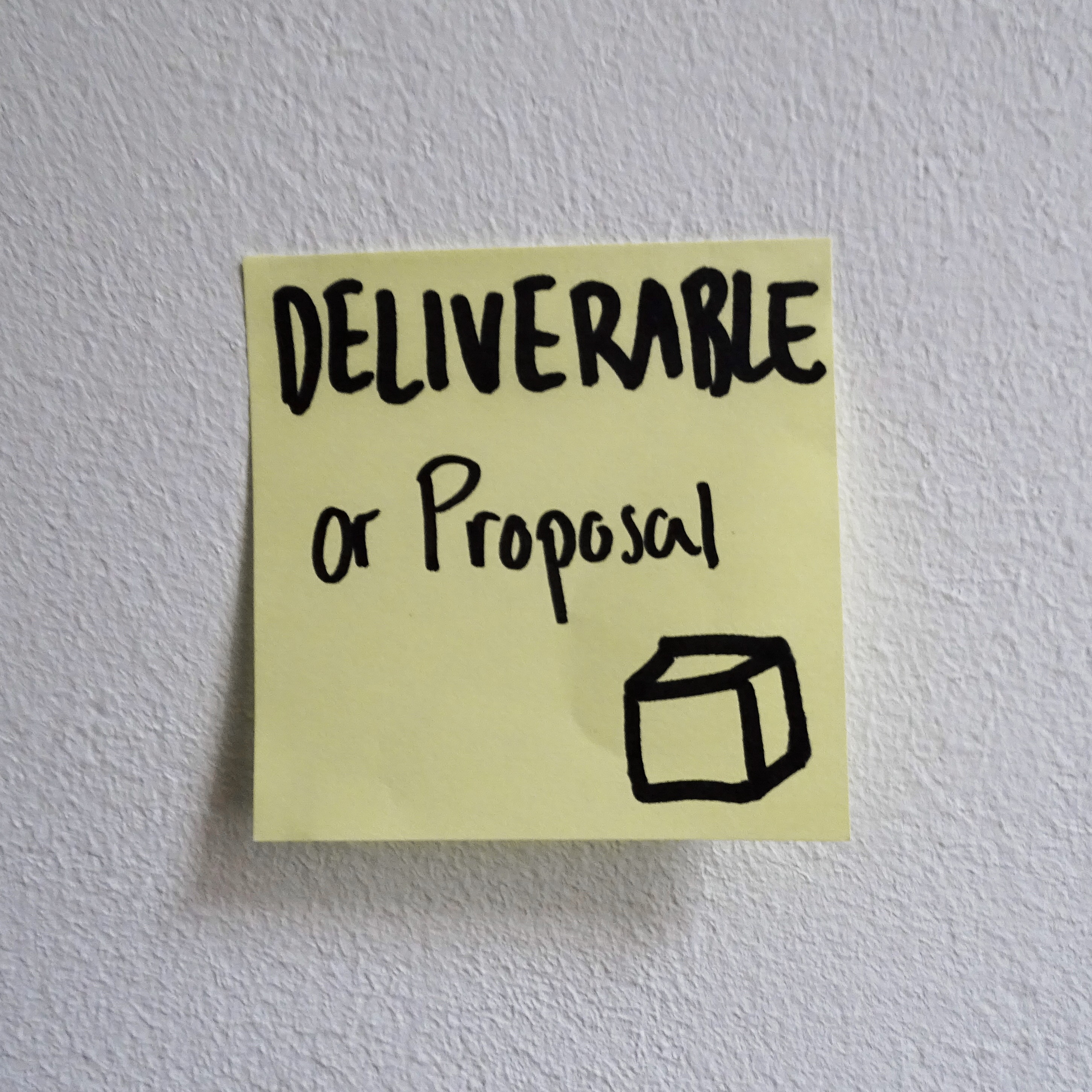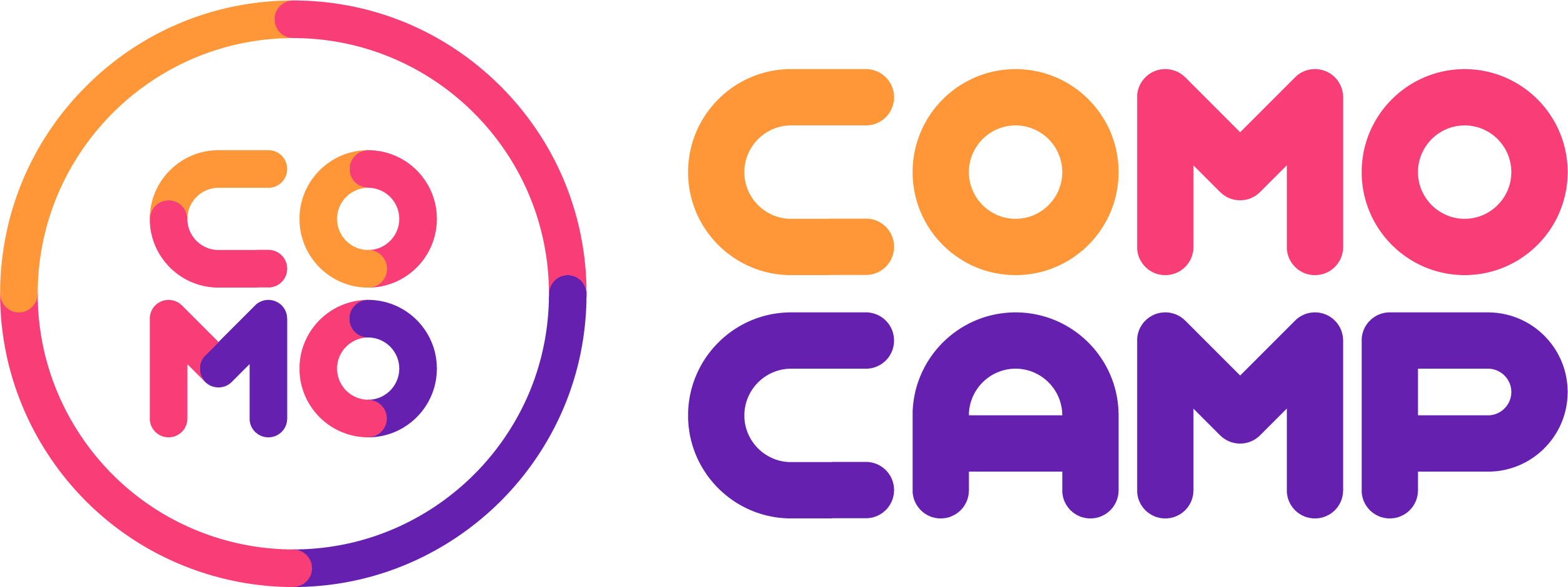
With dark yellow sticky notes, we visualize a person or a group like e.g. organisational units or specific users. We may want to use specific names or work with more generic roles.

With blue sticky notes we visualize sentences in which some actor (human or machine) is being told to do something. Bit fuzzy, we use it to describe the activity carried out.

With pink sticky notes, we visualize a machine or its components like e.g. services, modules or entities in terms of software or e.g. a car in terms of other machines or hardware.

With light green sticky notes we visualize sentences in which some actor (human or machine) is asked for information. We often refer to questions as being queries or searches.

With a lilac sticky note we describe the more concrete behavior of an actor (a human or a machine/component), in particular what influences the decisions to be made.

With dark green sticky notes we visualize sentences in which some actor (human or machine) provides existing facts or perceptions, often in a form of documents or objects.

With a magenta sticky note we highlight all kinds of different things that require further attention or things that still seem to be unclear and hence need to be clarified later.

With an orange sticky note, we visualize something that has happened, be it a reaction to a command or not, be it a (desired) material change or a (less fortunate) exception.

With light yellow sticky notes, we record results we propose or want to implement, either in terms of executable software or also in terms of necessary organizational changes.
About Building
Blocks and Colors
The building blocks of Storystorming are inspired by Alberto Brandolini’s EventStorming and consciously try to go in sync with the existing concepts. Storystorming differs, however, in the points where it seems useful in order to be a little more independent of architectural patterns such as ES/CQRS. This makes it easier for practitioners who work in very different contexts to use the colors - without harming the others. In addition, the colors can be easier reused for several different modeling techniques.
So what are the building blocks and colors Storystorming uses?
Storystorming emphasizes the guiding principle of Behavior-Driven Development: it is the behavior (lilac) of different actors - be it (dark yellow) humans or (pink) machines and components - that is at the heart of our analysis, and not the structure of any kind.
In addition - in line with Domain-Driven Design (and again: Behavior Driven Development) - Storystorming examines the language with which the actors interact with one another. A distinction is made between exactly four types of messages, which can be semantically traced back to the four grammatical sentence types in our languages. These types are commands (blue), questions (light green), statements (dark green) and, last but not least, notifications about events (orange). Such event notifications capture and represent relevant changes that would be difficult or impossible to observe without an explicit notification. Therefore, event notifications are a pattern that is semantically very similar to how humans use exclamations.
These seven central colors (purple, dark yellow and pink for the actors and their behavior as well as blue, orange and light or dark green for the language they use) are supplemented by two other colors that are practical for analysis and planning: one for the considered or planned work packages and deliverables (light yellow) and one for all aspects that are still poorly understood and therefore require further attention (magenta).
Click on the stickies to see further descriptions!
Hover over the stickies to see further descriptions!

With dark yellow sticky notes, we visualize a person or a group like e.g. organisational units or specific users. We may want to use specific names or work with more generic roles.

With blue sticky notes we visualize sentences in which some actor (human or machine) is being told to do something. Bit fuzzy, we use it to describe the activity carried out.

With pink sticky notes, we visualize a machine or its components like e.g. services, modules or entities in terms of software or e.g. a car in terms of other machines or hardware.

With light green sticky notes we visualize sentences in which some actor (human or machine) is asked for information. We often refer to questions as being queries or searches.

With a lilac sticky note we describe the more concrete behavior of an actor (a human or a machine/component), in particular what influences the decisions to be made.

With dark green sticky notes we visualize sentences in which some actor (human or machine) provides existing facts or perceptions, often in a form of documents or objects.

With a magenta sticky note we highlight all kinds of different things that require further attention or things that still seem to be unclear and hence need to be clarified later.

With an orange sticky note, we visualize something that has happened, be it a reaction to a command or not, be it a (desired) material change or a (less fortunate) exception.

With light yellow sticky notes, we record results we propose or want to implement, either in terms of executable software or also in terms of necessary organizational changes.



